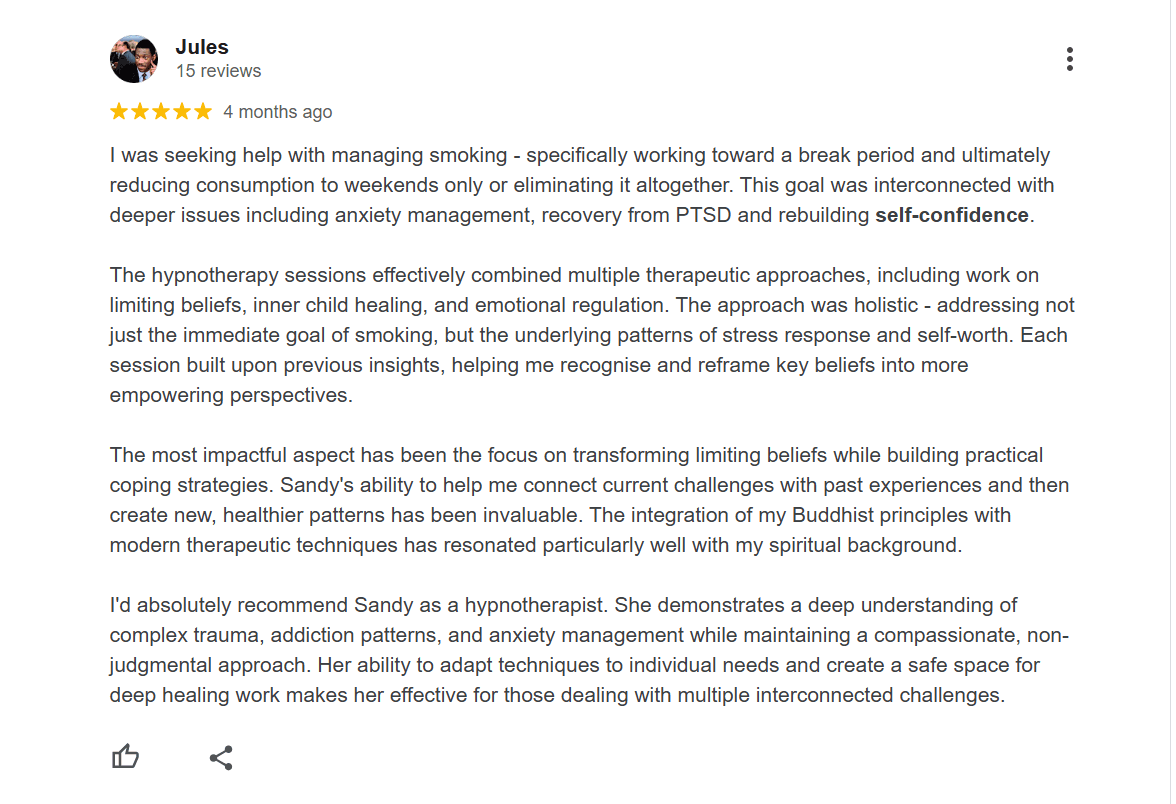Do you wish you could deliver important presentations with calm confidence? Do you want to share ideas boldly and display your talents with an unstoppable momentum? You deserve it. This is completely natural, especially for high-achieving professionals like you. However, fear of failure, criticism, or simply speaking up can quietly hold you back. It may stop you from reaching the leadership influence you can have.
In this guide on how to conquer fear, you will discover:
- The emotional and neurological roots behind these feelings.
- Learn practical, empowering strategies to release fear’s grip on you.
- How to lead with clarity, courage, and confidence like never before.
What Is Fear Really? (And Why It Feels So Powerful)
You must understand what it actually is if you want to know how to conquer fear.
Fear is a primitive, subconscious survival response built-in our brains since birth.
Ancient Reflex
It is the ancient “fight, flight, or freeze” mechanism. It is designed to protect us from immediate dangerous situations.
This response came in handy when our ancestors encountered a saber-toothed tiger:
- Their hearts raced
- Adrenaline surged
- Their bodies prepared for immediate action
This mechanism pushed them to fight and survive living in the wild.
Modern Implications
This ancient system often misfires in our modern professional lives, though. Your brain might perceive these routine tasks as threats instead of opportunities:
- Speaking in front of an audience
- Critical feedback
- A challenging new project
This is where you must know the difference between rational fear and irrational fear. Real danger is a life-threatening situation like stepping into traffic. It warrants a fear response.
However, delivering a presentation maybe nerve-wracking but not a fatal incident. Yet, your body can react as if it were.
Fear Feels Powerful
Think of fear like a highly sensitive smoke alarm that goes off even when there is no actual fire.
Imagine, you are presenting to a small group, and suddenly:
- Your palms sweat
- Your voice wavers
- Your mind goes blank
If this happens to you frequently, you might assume that you are a failure.
You are wrong. This isn’t because you are incompetent. It is because your brain has activated its alarm system.
Why? The highest probability is due to past negative experiences or perceived vulnerability. The intensity of this response is why it feels so powerful. It is bypassing your conscious, rational thought processes and hitting your most basic survival instincts.
You may feel completely overwhelmed and panicked by this feeling.
How to Manage the Fears and Anxiety?
Understanding how to conquer fear doesn’t mean pushing it away or pretending it doesn’t exist. Instead, it is about learning to listen to what this fearful feeling is trying to communicate.
What is it trying to protect you from? Often, it is not physical harm. Rather, you “perceive” it is a threat to your:
- Self-worth
- Reputation
- Sense of belonging
Recognising this distinction is the first critical step toward gaining control over fear.
Fear Is Learned — And So Are Your Limiting Beliefs
You must understand that much of the work-related fright is not innate but learned. If you want to truly conquer fear, find out the actual source of:
- The fear of failure
- The fear of criticism
- The apprehension of being truly seen and speaking up
These fears are often results of years of toxic thought patterns. Mostly, those deeply ingrained thoughts from early years turn into beliefs. Those negative beliefs shape your apprehensive behaviour.
Childhood Factors
Do you remember your formative years? Negative/Positive conditioning can come from these sources:
- Childhood Authority Figures: Perhaps you were subtly (or not so subtly) taught that making mistakes was unacceptable. You may even have been shamed or punished.
For example, a parent used to get frustrated over minor things like a spilled glass of milk. This can result in their child to develop a fear of judgement in the workplace.
- Cultural/School Norms: Schools and society often lend a hand in building a fear of failure. How? By over-emphasising grades and rules. While a gentle nudge maybe good for the young minds, extra strictness may instill anxiety and fear. This may carry on in adulthood.
Limiting Beliefs in Adulthood
Workplace environment plays an important role. A highly critical boss’s remarks might push the idea that “showing up” means getting ridiculed. A competitive work environment can have a similar effect.
If you were shut down or sneered at in a meeting once, your subconscious mind learns to associate speaking up with danger.
These experiences crystallise into what we call “limiting beliefs.”
These aren’t just fleeting thoughts but strong, automatic convictions. These run through your mind all the time even when they don’t apply to your current situation. For example:
- “I must be perfect to be accepted or succeed.” This belief can paralyse you mentally. You may over-prepare or procrastinate to the point of exhaustion. Why? Just to avoid the supposed “catastrophe that would unfold if you were imperfect.”
- “Speaking up will surely get me judged or rejected.” This inner dialogue can make you silent in meetings and presentations. That way, you might miss opportunities to share valuable insights. Also, you feel overlooked which is another factor to build FOMO.
Finding out how to conquer fear depends on recognising that it happens because of negative beliefs. You might intellectually understand that your colleagues are supportive, or that a presentation is just a presentation. Nonetheless, these deeply seated beliefs can trigger the ‘smoke alarm’ mentioned earlier.
How Do You Get Over Fear? Trace the Origin of Your Fear
This is highly necessary to effectively address how to conquer fear. It is not enough to simply acknowledge the fear.
You must be brave and do an empathetic self-reflection to trace its origin. For that, you must turn inwards deep into your mind. You need to go back to the moments when those thoughts started to form.
Questions to Ask
Begin by asking yourself reflective questions:
- “When did I first feel this specific fear? Do I have a fear of making a mistake, or the fear of being criticised, or fear of being seen?”
Try to recall the earliest memory linked to this feeling. Was it in a school classroom, a family get together, or a previous job?
- “Whose voice does this fear speaks in?” Often, the negative internal voice you hear is an echo of someone significant from your past. It maybe a parent, a teacher, a demanding boss, or even a friend who once shamed you.
Recognising the exact source can help you break down the criticism. That way, you can see it for what it truly is—a learned response, not a truth about you.
These prompts are not about blaming anyone. Rather, they help you get clear about your mental barriers. You can do more soul-searching with the help of the answers you get:
- “What did I need in that past moment that I didn’t get?” Perhaps you may have needed:
-Reassurance
-Validation
-A safe space to express yourself without judgment
These unmet needs may have made you vulnerable. So, fear exploits that vulnerability later in life.
Client-Based Insight
Here is one of the feedback from our client, a professional we have worked with at MIHH.
“I traced my fear of visibility back to a specific moment in high school/school/home. I was embarrassed/scolded during a presentation/some minor mishap. Everything started to make sense when I recalled it. It wasn’t about my abilities now. It was about that past feeling of shame as it shaped my perception towards presentation.”
This kind of work is incredibly powerful. It allows you to separate the past experience from your present reality, and your subconscious mind no longer have to give you the false alarm as you are now in a totally different environment.
How to conquer fear with this knowledge? Things don’t seem as frightening as before when you dismantle them. The more aware you are about your “fear origins” and challenge your limiting beliefs, the more chance for you to manage it effectively.
Why Affirmations Alone Don’t Work?
Many professionals use positive affirmations to understand how to conquer fear. Affirmations like “I am confident” or “I am capable” seem logical and well-intentioned.
The issue? They often don’t work when you use them as an ONLY solution to resolve deep-rooted fears.
The reason is simple: you cannot simply “positive-think” your way out of an unresolved subconscious belief.
Fears Is Stored in the Body
Fear is not merely a thought. It is a physiological and neurological response. Both body and mind hold fear. Your nervous system activates in response to fear. You may experience these symptoms:
- Muscles tension
- Shallow breathing
- Increased heart rate
These are physical manifestations of a deeply embedded survival mechanism. Basically, your body is signaling danger.
Trying to override this with an affirmation is like trying to convince a roaring fire to stop by politely asking it to. Your rational mind might acknowledge the affirmation. However, your subconscious and your body are still assuming a life threat.
Affirmations Aren’t Effective Alone
Affirmations are helpful, but your nervous system must feel safe so they can work. They become powerful tools for belief-building after you have recognised and resolved your fear’s origin. Until that happens, affirmations won’t calm you down during triggering events.
Once you pin point the emotional origin of the fear—perhaps through subconscious healing methods discussed later—your body naturally begins to relax. This is a drastic change of symptoms:
- Breathing deepens: Your diaphragm expands which signals safety to your nervous system.
- Thoughts quiet: The constant inner monologue of worry decreases.
- Action becomes easier: Your mental and physical blocks that held you back before disappear. So, you can move forward with confidence.
You cannot force relaxation. It comes naturally once your subconscious recognises a “threat” as something minor and manageable.
Then, affirmations can truly resonate with you to build a positive reality. Why? Because then they align with your internal state.
The 3 Most Common Professional Fears — and How to Unravel Them
There are three common anxieties that professionals seeking how to conquer fear can face. Understanding the distinct roots of these fears is important for targeted resolution.
Fear of Failure
This is perhaps one of the most pervasive fears in high-achieving environments. Its root often lies in a deep-seated fear of:
- Rejection
- Punishment
- Shame
Childhood Memories
Many of us are conditioned since childhood that mistakes mean inadequacy or unworthiness. Things like:
- A poor grade
- One failed project
- A missed deadline
can be internalised as a personal failing rather than a learning opportunity. So, you may develop:
- Perfectionism
- Procrastination
- An aversion to taking calculated risks
All of these stifle professional growth and leadership potential.
What Will Help
You must reframe your concept of failure.
Do you think a once-in-a-blue-moon typo error makes you good-for-nothing?
Instead of viewing it as a career-ending crime, allow this mantra: “Failure isn’t final — it is feedback.” A research on growth mindset versus fixed mindset strongly supports this reframe. It shows that those who see setbacks as opportunities for learning are more resilient and successful in the long run.
Every “failure” offers invaluable data points:
- What worked
- What didn’t go through
- What can you adjust for next time
Fear turns into a powerful teacher when you remove the emotional weight of shame from the equation. This develops your learning and innovation towards leadership goals.
Fear of Criticism
The fear of criticism comes from a strong need for validation and approval from people. It is also called “people pleasing.” This may sound good on the surface, but its repercussions can be dangerous.
How? If you base your self-worth on what others think of you, then the slightest criticism may seem world-ending. You may think of it as a direct attack on your identity.
Do you keep thinking about “that one remark” out of several good ones throughout the day? If yes, then it is an alarm bell. This anxious feeling can make you:
- Unable to receive feedback (even constructive)
- Reluctant to express disagreement during arguments
- Overemphasise pleasing seniors or colleagues even if it compromises you
What Will Help
You must shift your focus to developing emotional regulation. Also, working on building healthy boundaries and saying “no” where necessary is important.
This doesn’t mean that you ignore feedback altogether. Rather, you should be able to differentiate between helpful criticism from baseless negativity.
How? By building a strong internal locus of control where your sense of worth comes from your own achievements. Other peoples’ remarks won’t disturb you then. In other words, you should learn self-compassion. It equips you to handle criticism without experiencing intense emotional distress.
Learn to ask: “Is this criticism helping me grow, or is it just someone else’s projection?” You have the power to choose what you internalise.
Fear of Being Seen / Speaking Up
This fear often has deep roots in past experiences of:
- Embarrassment
- Shaming
- Exclusion
Were you laughed at for an idea in a past meeting? Were your opinions openly dismissed? If that happened, your subconscious may believe that laying low is the best strategy to avoid pain.
This mindset can be disastrous for your leadership goals, though. You start avoiding taking initiatives or leading projects. Also, you may shirk from public speaking opportunities. As a result, productivity might decrease because your valuable insights were absent from critical discussions.
What Will Help
You need a dual approach to manage this fear:
- Rebuild internal safety: Address the past triggers that developed this fear. You may have to revisit and reprocess the moments where you felt embarrassed or excluded.
- Support nervous system for visibility: Practice nervous system regulation methods before presentations i.e. deep breathing or somatic grounding exercises. These can help your body feel secure in that moment even in the spotlight.
Research shows that specific breathing techniques can reduce anxiety and instill calm. This makes engaging in high-pressure situations easier.
How We Help Clients Release Fear at the Root
Our approach at Make It Happen Hypnotherapy (MIHH) to how to conquer fear is not to manage symptoms only. We help you transform your personality positively subconsciously. It means that we let you find, face, and resolve your deep-rooted causes of fear.
Traditional therapies may bring short-term change often. Why? Because they don’t address the subconscious memories that build fear in you.
Our Methods
We use different evidence-based subconscious healing methodologies. What’s more, we design the therapies according to your unique needs after detailed discussions. These include:
This is not a stage stunt or a controlling tool like you see in the movies. It is a highly effective alternative treatment method that brings quick results. A study highlights the effectiveness of hypnotherapy in increasing employees’ wellbeing, too.
Hypnotherapy eases you into a relaxed mental state. From there, you can dive deeper into your subconscious to re-visit hurtful memories.
Once that is resolved, your mind becomes more receptive to positive suggestions. You can upgrade negative beliefs and emotional responses that conscious mind cannot reach on its own.
Inner Child Work
As we discussed above extensively, many professional fears stem from unresolved negative experiences in childhood. Inner child work is a therapy method focused on resolving exactly that.
It connects your conscious mind with the “vulnerable child” part of your subconscious mind. Remember, the inner child stays with you all your life.
So, you can remember and “see” the memories that hurt you the most when you were a kid. As a result, you know which memories to face and resolve to conquer fear ultimately.
The biggest advantage of this awareness is that you can start to “re-parent” yourself. It means you can offer yourself the compassion, safety, and support you couldn’t get before.
This process helps to release these suppressed feelings and build self-acceptance and emotional resilience:
- Shame
- Fear
- Sadness
Ultimately, inner child work allows you to break destructive patterns. You can develop self-compassion and step into the leadership role fully.
This technique helps you to access and revisit past experiences safely. You may not re-visit past lives necessarily. Nonetheless, you can see tide-turning moments in your current life that created your fears.
Your therapist walks you into a deeply relaxed or hypnotic state first. Then, they help you recall and re-experience triggering memories. This lets your suppressed emotions to surface so you can process them.
The process involves several phases:
- Regression to the memory
- Emotional expression and release
- Relearning or reprogramming subconscious beliefs
- Integration
While revisiting these formative experiences, you can:
- Be aware of the root causes of your present fears
- Reframe the meaning of negative past events
- Release emotional burdens that you were carrying subconsciously
Have you heard of “The Havening Touch?” Havening techniques are somatic techniques. You learn how gentle touch on specific areas of the body relaxes you.
Actually, the havening touch creates delta waves in the brain that changes its electrochemical state. These waves reduce your emotional distress immediately.
This allows the brain to process and release the negative emotional charge due to past experiences. As a result, you get quick, drastic relief from anxiety and fear.
Therapist’s Insight
As a therapist specialising in this field, I can confirm:
“Fear doesn’t need to be managed. It needs to be understood and unwound.”
Your fear doesn’t only reduces when you find the actual cause. Rather, it dispels entirely. Why? Because the subconscious mechanism that was fuelling it is no longer active.
Client J.’s Story as Proof on How to Conquer Fear
We have witnessed remarkable transformations. There is one client J. who visited us to manage his smoking problem. However, further discussion revealed his long-standing insecurities and fears. Those negative triggers were causing him anxiety which was ultimately being displayed as smoking.
His treatment plan was a holistic approach that combined:
- Emotional regulation
- Resolving limiting beliefs
- Inner child healing
- Practical coping strategies
J. felt remarkable changes in his behaviour after a few sessions. He no longer have the fears and anxiety he once had. Also, he could apply coping strategies in triggering situations to calm himself down.
At the end of his therapy program, he was able to manage his smoking habits and build more confidence to move forward in life.

What You Can Start Doing Now?
Subconscious healing is necessary for managing fear completely. Nevertheless, you can include practical tools into your daily life to start the journey of how to conquer fear. These tools help regulate your nervous system and make your brain resilient.
Somatic Grounding Techniques
Fear can pull you out of your body into a tornado of anxious thoughts. Somatic grounding helps you reconnect with your body and the present moment.
Try the “5-4-3-2-1” exercise:
- Name 5 things you can see
- 4 things you can feel (e.g., your feet on the floor, the texture of your clothes)
- 3 things you can hear
- 2 things you can smell
- 1 thing you can taste
This snaps your attention back to the present situation. Once you are not overwhelmed anymore, you can calm yourself down.
Breathing Techniques
Quick and shallow breathing clearly points to the fight-or-flight response.
In contrast, deep, diaphragmatic breathing is a safety sign for your nervous system.
Practice “box breathing”:
- Inhale for a count of four
- Hold for four
- Exhale for four
- Hold empty for four
- Repeat this cycle several times
This simple yet powerful method can relax your nerves in minutes.
Writing to the Inner Child or Fear Voice
This can be a powerful reflective practice. Take a journal and write a letter to your “inner child” who holds on to the past fear.
- Acknowledge its presence
- Validate its feelings
- Comfort and reassure it through your compassionate adult self
Alternatively, you can write a dialogue with your “fear voice.” You can ask what it is trying to protect you from. Then, you can write an understanding and empathetic answer.
This writing process brings out your hidden fear so you can clearly see and dispel it.
Mirror Affirmations (After Safety is Established)
Mirror affirmations can be powerful reinforcements once you have found out the root cause(s) of the fear. They work when your mind is feeling safe.
Stand in front of a mirror and look yourself in the eyes.
Then, calmly say affirmations like:
- “I am safe to be seen”
- “My voice matters”
- “I am capable and confident”
You must feel the truth of the affirmations in your body. Just repeating them won’t do the trick. This is why addressing the root first is so important.
Daily Micro-Challenges
Finally, you need to expose yourself to situations that trigger mild fear. This will build confidence.
Start small: If public speaking is a fear, offer to lead a small team meeting.
If criticism is a fear, ask for specific feedback on a small project.
These daily micro-challenges can help to desensitise your nervous system. Also, they will create new neural pathways to increase courage and expertise. Each successful micro-challenge establishes that you are capable and safe. Gradually, the power of fear will vanish to give way to self-confidence and leadership.
In a Nutshell
You Were Meant to Lead — Not Stay Small.
The answer to how to conquer fear is to change your POV about it through alternative methods. This helps your subconscious to dispel it into facing and resolving that fear. Ultimately, you can fulfill your leadership goals.
If fear is stopping your promotions or exerting your expertise, know that you don’t have to struggle alone. We at Make It Happen Hypnotherapy (MIHH) specialise in helping professionals just like you resolve deep-rooted fears.
Book a free session with us today. Let’s explore how we can help you lead with the clarity, confidence, and courage that truly reflects your potential.
FAQs
What are the First Steps to Conquer Fear?
The first steps to conquer fear are to clearly understand what you are afraid of. Then, you must find out the root cause behind it. You can do that by revisiting your feelings and past experiences and challenge the limiting beliefs you had. Once that happens, you can rewire negative beliefs into positivity.
Finally, you can imagine yourself small, manageable steps with the things you want to do and generate positive feelings. Once the positive feelings is built, you can try taking the steps in your reality. This can build confidence as you get more comfortable.
How Can I Manage Fear and Anxiety in the Moment?
You can manage fear and anxiety in the moment through grounding techniques. Focus on your breath, practice mindfulness, or carry out short bursts of physical activity i.e. shaking your body.
Remind yourself that fear is a normal emotion. Also, do positive self-talk to rewire your negative thoughts. You can also set small, achievable goals i.e. making eye contact or asking a question. These small wins may help you regain control and reduce anxiety quickly.
Why Is Facing Your Fears Important for Personal Growth?
Facing your fears is important for personal growth because it helps you become resilient. What’s more, you can get out of your comfort zone to find new opportunities.
You learn from mistakes when you face your fears. It helps you develop courage and increase confidence in your abilities. Over time, you can turn fear into a source of motivation. As a result, you can pursue your goals and live more fully.








